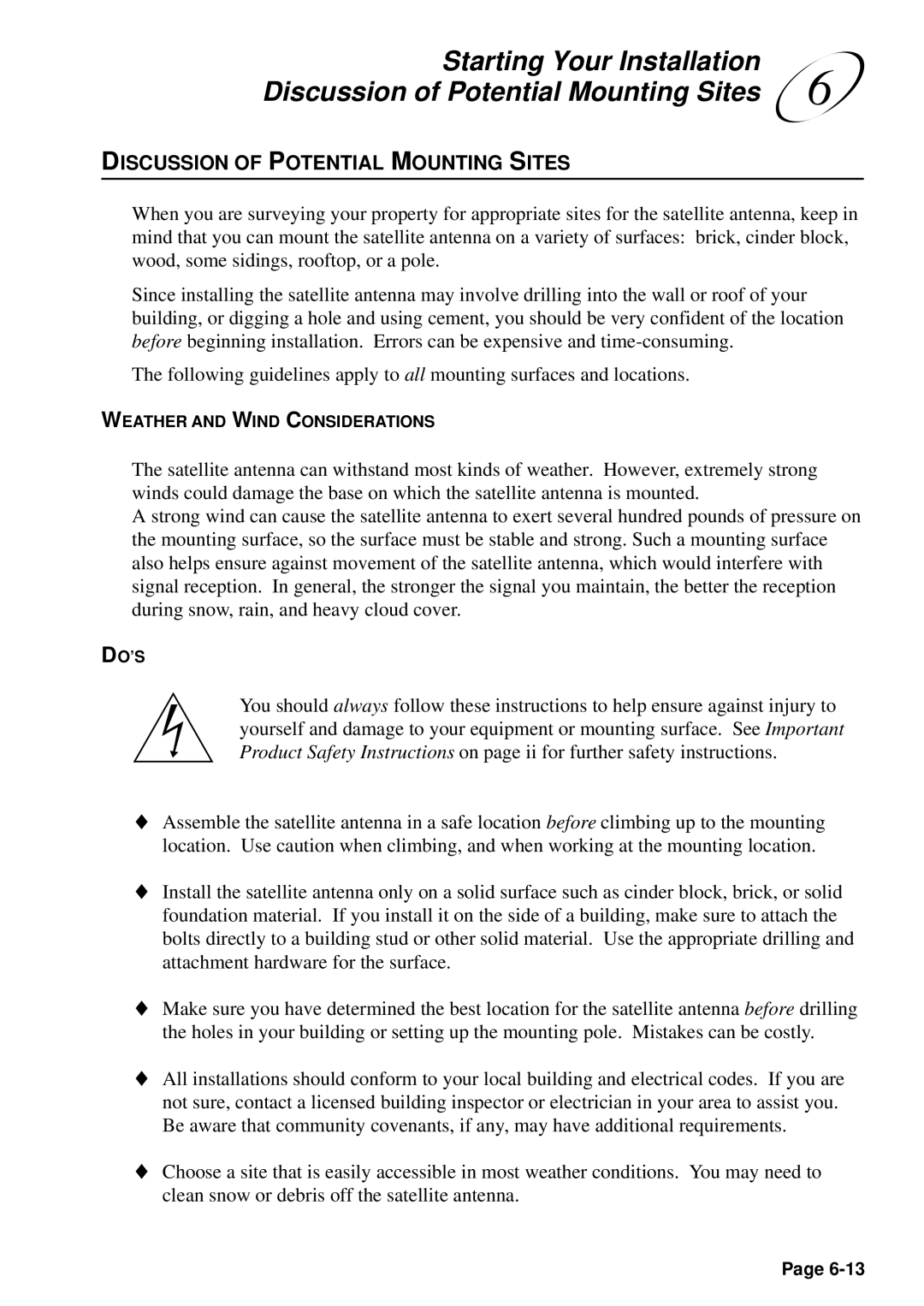
Starting Your Installation | 6 |
Discussion of Potential Mounting Sites |
DISCUSSION OF POTENTIAL MOUNTING SITES
When you are surveying your property for appropriate sites for the satellite antenna, keep in mind that you can mount the satellite antenna on a variety of surfaces: brick, cinder block, wood, some sidings, rooftop, or a pole.
Since installing the satellite antenna may involve drilling into the wall or roof of your building, or digging a hole and using cement, you should be very confident of the location before beginning installation. Errors can be expensive and
The following guidelines apply to all mounting surfaces and locations.
WEATHER AND WIND CONSIDERATIONS
The satellite antenna can withstand most kinds of weather. However, extremely strong winds could damage the base on which the satellite antenna is mounted.
A strong wind can cause the satellite antenna to exert several hundred pounds of pressure on the mounting surface, so the surface must be stable and strong. Such a mounting surface also helps ensure against movement of the satellite antenna, which would interfere with signal reception. In general, the stronger the signal you maintain, the better the reception during snow, rain, and heavy cloud cover.
DO’S
You should always follow these instructions to help ensure against injury to yourself and damage to your equipment or mounting surface. See Important Product Safety Instructions on page ii for further safety instructions.
♦Assemble the satellite antenna in a safe location before climbing up to the mounting location. Use caution when climbing, and when working at the mounting location.
♦Install the satellite antenna only on a solid surface such as cinder block, brick, or solid foundation material. If you install it on the side of a building, make sure to attach the bolts directly to a building stud or other solid material. Use the appropriate drilling and attachment hardware for the surface.
♦Make sure you have determined the best location for the satellite antenna before drilling the holes in your building or setting up the mounting pole. Mistakes can be costly.
♦All installations should conform to your local building and electrical codes. If you are not sure, contact a licensed building inspector or electrician in your area to assist you. Be aware that community covenants, if any, may have additional requirements.
♦Choose a site that is easily accessible in most weather conditions. You may need to clean snow or debris off the satellite antenna.
Page
